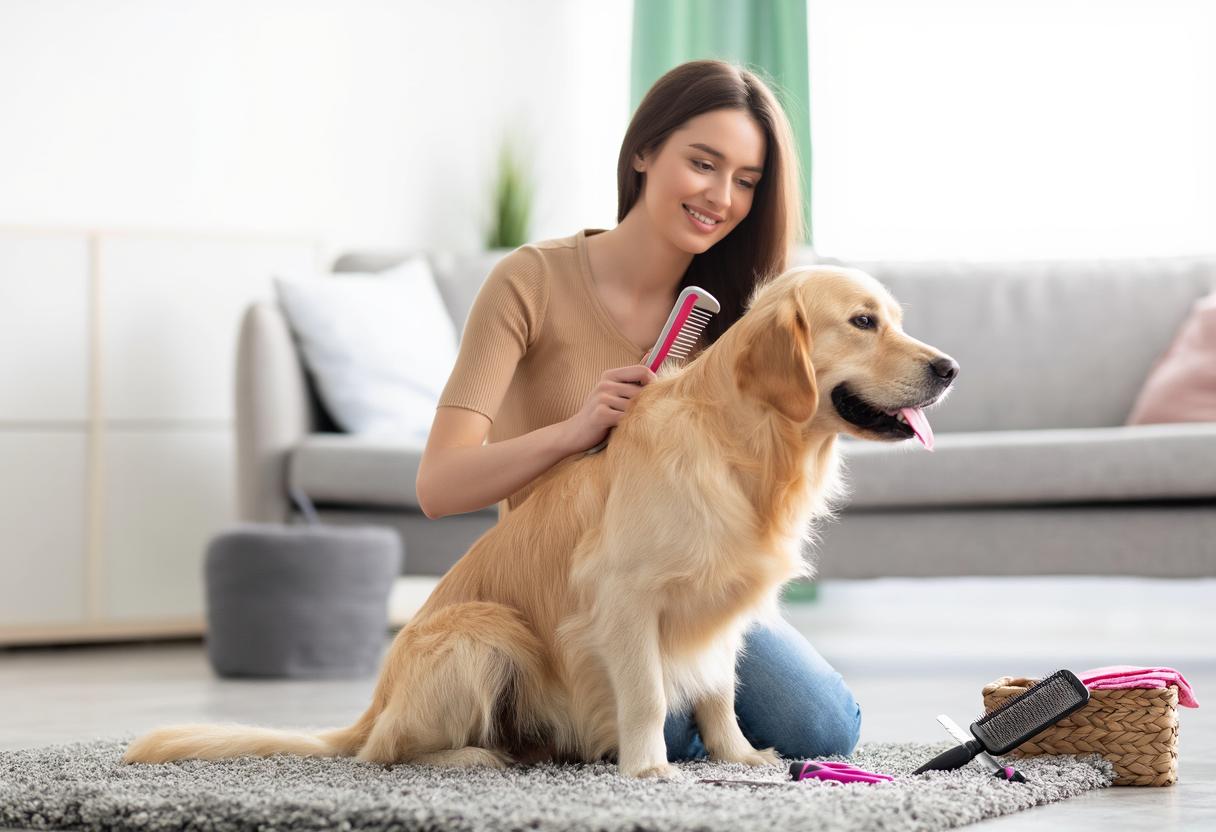Unleashing the Secrets of Dog Grooming: A Complete Guide!
Dog grooming is an essential aspect of pet care, ensuring that your furry friend remains healthy and happy. This comprehensive guide explores various grooming techniques, tools, and best practices to keep your dog looking and feeling great. From brushing to bathing, discover how proper dog grooming can enhance your pet’s well-being.
Understanding the Importance of Dog Grooming
Dog grooming is significantly more than just making your pet look good; it plays a vital role in maintaining their overall health. Regular grooming helps to prevent skin issues and check for parasites. In addition, dog grooming fosters a deeper bond between you and your furry companion, allowing you to understand their needs better. Not to mention, it helps in keeping your home cleaner by reducing shedding and dander. The frequency of grooming can depend on your dog’s breed, coat type, and lifestyle. Therefore, understanding the specific dog grooming requirements of your pet is crucial for ensuring they live a happy and healthy life.
The Essential Tools for Effective Dog Grooming
When it comes to dog grooming, using the right tools can make all the difference. Key tools include brushes, combs, nail clippers, and dog shampoo tailored for canine needs. Brushes come in various types, such as slicker brushes for tangles or rubber brushes for short-haired dogs. Investing in high-quality dog grooming supplies can ease the grooming process, making it enjoyable for both you and your pet. Don’t forget grooming gloves, which can help collect fur and give your dog a gentle massage. Ultimately, ensuring you have the right tools can enhance your dog grooming experience.
Steps for a Successful Dog Grooming Session
A successful dog grooming session involves a few vital steps. First, make sure your dog is comfortable and relaxed; this creates a positive environment. Start with brushing to remove tangled fur and debris. Pay attention to sensitive areas like the belly and paws, where knots can form. Next, take care of any necessary bathing, ensuring to use dog-specific shampoo to avoid skin irritations. Lastly, don’t forget dental care—brushing your dog’s teeth can prevent long-term health issues. Regular sessions of dog grooming will not only keep your dog looking their best but will also contribute to their health and happiness.
Professional Dog Grooming vs. DIY Grooming
Deciding between professional dog grooming services or doing it yourself is a common dilemma among pet owners. Professional groomers are trained to deal with various breeds and temperaments, ensuring a comprehensive grooming service that covers all aspects. On the other hand, DIY dog grooming allows for more flexibility and can be more affordable in the long run. However, it requires a commitment to learning proper techniques and investing in grooming tools. Consider both options based on your dog’s specific needs and your capabilities to ensure the best results in dog grooming.
Grooming Different Dog Breeds: Tailoring Your Approach
Different dog breeds come with their own distinct grooming needs, and understanding these variations is imperative for effective dog grooming. For instance, long-haired breeds may require daily brushing to prevent tangles, while short-haired dogs might need less frequent sessions. Regular trimming is essential for certain breeds to maintain their distinct appearance and prevent matting. Furthermore, recognizing seasonal shedding cycles can help in scheduling grooming appointments at strategic times of the year. Therefore, tailoring your dog grooming approach based on breed characteristics is crucial for effective care.
Common Mistakes in Dog Grooming and How to Avoid Them
Many pet owners make common mistakes in dog grooming that can lead to stress for both dogs and owners. For instance, rushing through the process can cause anxiety and discomfort. Failing to choose the right tools can lead to ineffective grooming outcomes. Additionally, many overlook the importance of rewards during grooming; positive reinforcement encourages good behavior in dogs. Always take breaks if your dog seems stressed, and remain patient throughout the session. Awareness of these common pitfalls enables a smoother and more successful dog grooming experience.
The Long-Term Benefits of Regular Dog Grooming
Regular dog grooming has numerous long-term benefits that extend beyond aesthetics. For one, it promotes a healthy coat and skin, reducing the likelihood of infections or irritations. More importantly, routine dog grooming can assist in early detection of health issues, such as lumps, bumps, or skin conditions that may otherwise go unnoticed. Additionally, it fosters good hygiene practices, including checking ears and teeth, which are often neglected. Consequently, investing time in regular dog grooming not only ensures your dog's physical appearance but also their overall well-being.
